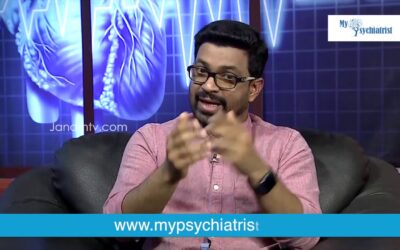A personality trait is a longstanding pattern of perceiving, thinking, and behaving, which occurs both in personal as well as social contexts. When these traits become inflexible and maladaptive, they cause significant difficulties for the individuals as well as the people around them. In such cases, it is called a personality disorder. Such traits are generally far removed from the what is culturally expected. They may affect thinking, mood, interactions with others and formation of relationships, or impulse control. The features of a personality disorder usually become recognizable during adolescence or early adult life.
Often, the characteristics that define a personality disorder may not be considered problematic by the individual, and it may be relatives or friends who bring the patient for evaluation.
Personality disorders are broadly grouped into three clusters based on similarities in constituting traits.
Cluster A includes paranoid, schizoid, and schizotypal personality disorders. Individuals with these disorders are described as odd or eccentric. In paranoid personality disorder the person is distrustful and suspicious regarding others’ motives. Those with schizoid personality disorder show detachment from social relationships and are not as emotionally expressive or responsive as others. Schizotypal personalities are uncomfortable in close relationships and have eccentricities in thinking and behaviour.
Cluster B includes antisocial, borderline, histrionic, and narcissistic personality disorders. These individuals often appear dramatic, emotional, or erratic. Antisocial personalities show disregard for, and violation of, the rights of others. In borderline personality disorder there are unstable interpersonal relationships and marked variations in self-image and mood with high degree of impulsivity. Those with histrionic personality are excessively emotional and attention seeking, while those with Narcissistic personality disorder are grandiose, demand admiration, and are nonempathic towards others.
Cluster C includes avoidant, dependent, and obsessive-compulsive personality disorders. Individuals with these disorders are excessively anxious or fearful. In avoidant personality disorder there is a pattern of being socially inhibited, feeling inadequate with low self-esteem, and being overly sensitive to negative opinions. Dependent personalities are submissive and clingy and show an excessive need to be taken care of. Obsessive-compulsive personalities on the other hand have a preoccupation with orderliness, perfectionism, and control.
Individuals frequently present with co-occurring personality traits from different clusters.
Although personality traits occur in a huge proportion of the population, they do not usually cause sufficient dysfunction to warrant a diagnosis of a personality disorder. Based on cultural differences in acceptance of certain traits, and differences in gender norms, clear prevalence estimates for personality disorders are not available. 8 to 15 out of every hundred people are estimated to have atleast one personality disorder.
The main point that needs to be established before a diagnosis of personality disorder is made is that the patterns are longstanding and not in response to situations or due to medication, use of addictive substances or due to a medical disorder such as insults to the brain. In order to establish this, sometimes it may be necessary to talk to multiple informants and evaluate the individual over more than one session.
The management of personality disorders includes psychotherapy to help handle the maladaptive thinking and behaviour. Some behaviours such as aggression and impulsivity may require medications. Associated mood disturbances and anxiety states also respond to medications. Due to their longstanding nature and the fact that many people do not consider their patterns to be problematic, the treatment of personality disorders is often a difficult and long process. The outcome primarily depends on whether the individual is sufficiently motivated.



0 Comments